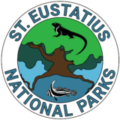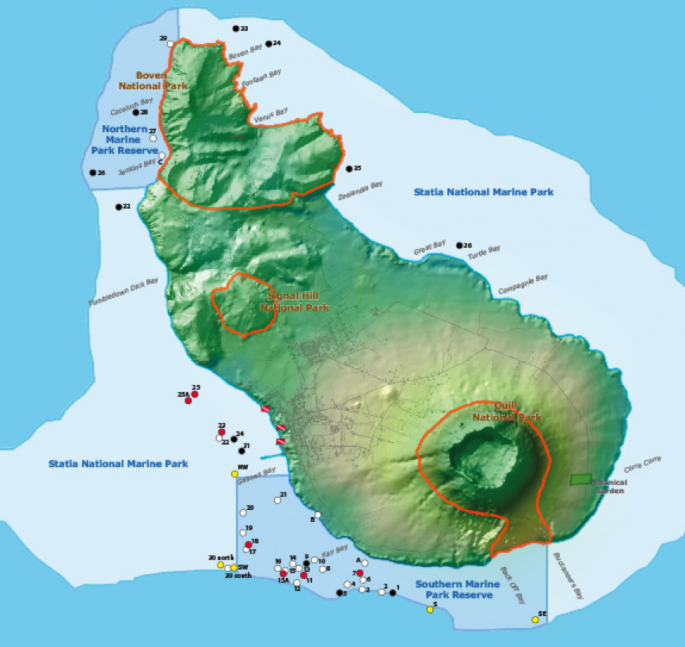The 3rd Ti whale An Nou expedition of the year 2022 took place from May 17th to June 1st. It allowed the expedition to cover the North of the Lesser Antilles over 15 days. They departed from the city of Le Marin in Martinique with a direct navigation towards the South of Guadeloupe. During this navigation, there was no effort of observation since the majority of the journey took place at night. Arrived in Guadeloupe the effort of observation began and concerned for a first week the islands of Montserrat, Nevis, Saint Kitts, Statia and Saba, with a particular attention to Saba Bank.
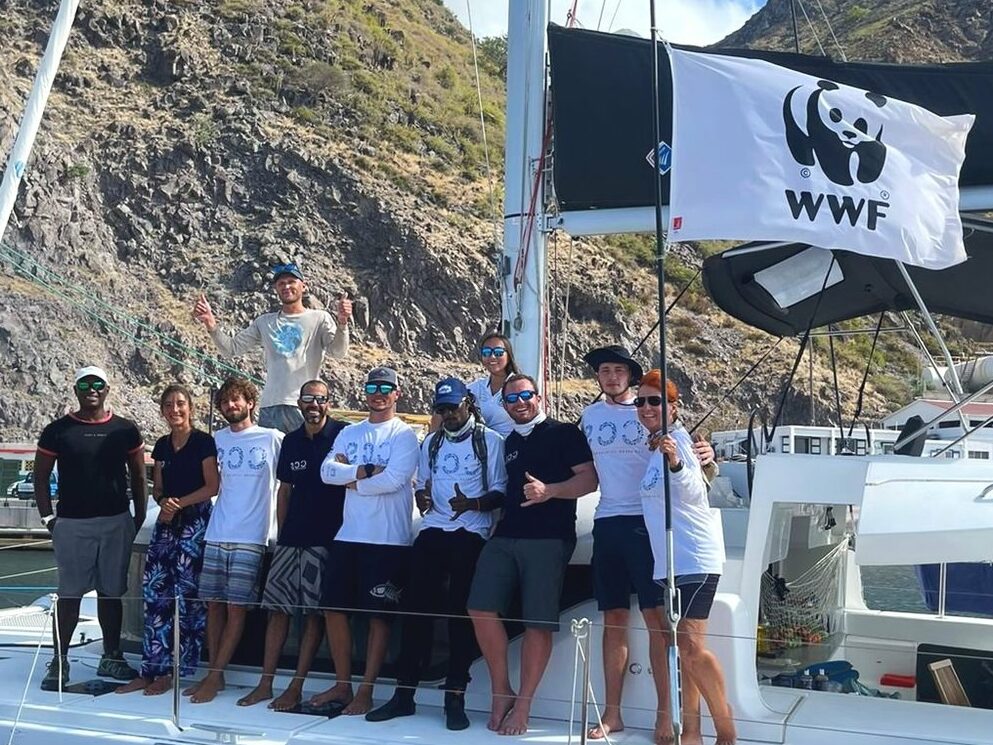
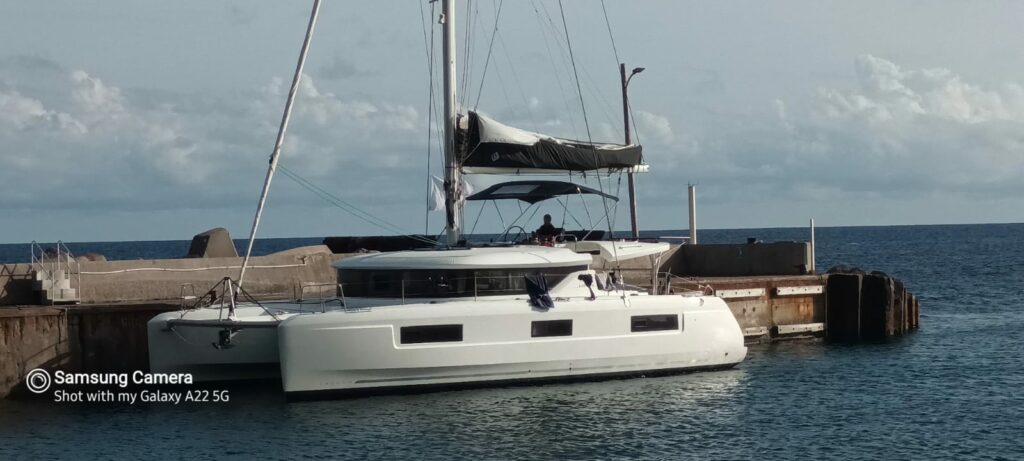
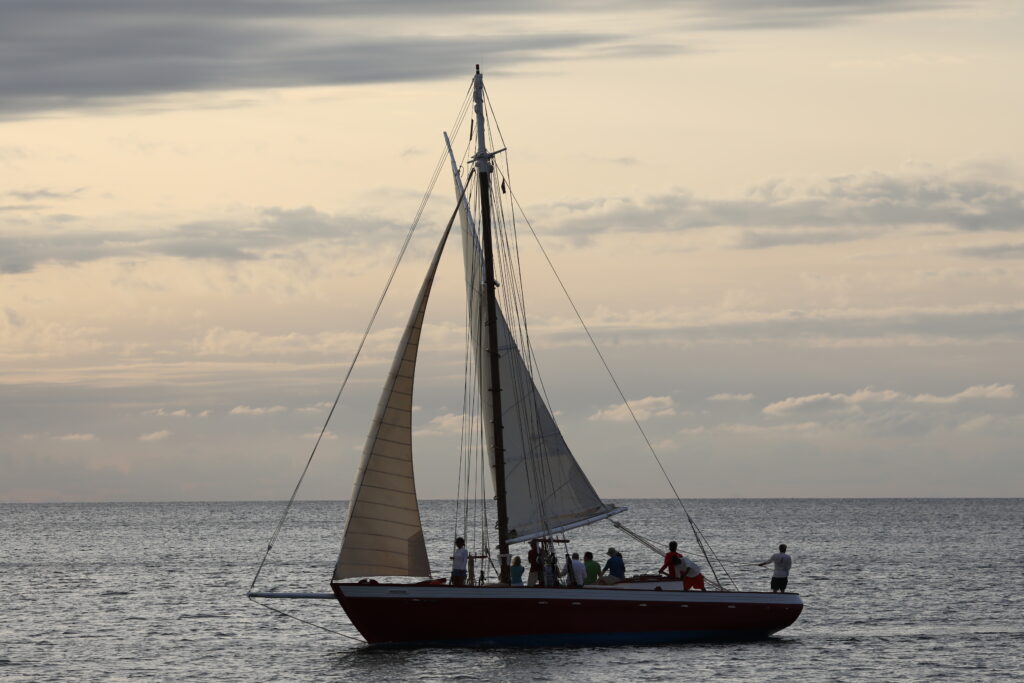
During this first week, sperm whales were observed in the south and north of Guadeloupe, and our first humpback whale of the expedition in Montserrat. When we arrived in Saba, we started to go around the Saba Bank, exploring both the shallow parts and the drop offs. During these three days, we observed several species of cetaceans. The first day was without observations, then we observed a group of about twenty striped dolphins the second day. Finally the third day, 3 groups of cetaceans were observed at the same time. A group of 80 spotted dolphins, one of 50 fraser’s dolphin and a group of 120 short-finned pilot whale.
The expedition then continued to the islands of Anguilla, Saint Martin and Saint Barthelemy where a dozen humpback whales were observed. These observations are consistent with the end of the humpback whale season in the Caribbean and their northward migration. Several singing males were observed circling around a female with her calf, with various males attempting to show dominance over the others by breaching, fluking or pectoral tapping. Several groups of bottlenose dolphins were also observed in these northern Caribbean islands.
Finally, the expedition headed south to return to Martinique. During this return trip, a group of bottlenose dolphins was observed in Guadeloupe, then several large groups of Pantropical spotted dolphins in the islands of Guadeloupe, Dominica and Martinique. And finally, before the end of the expedition, a group of Rough-toothed dolphins was observed in Martinique.
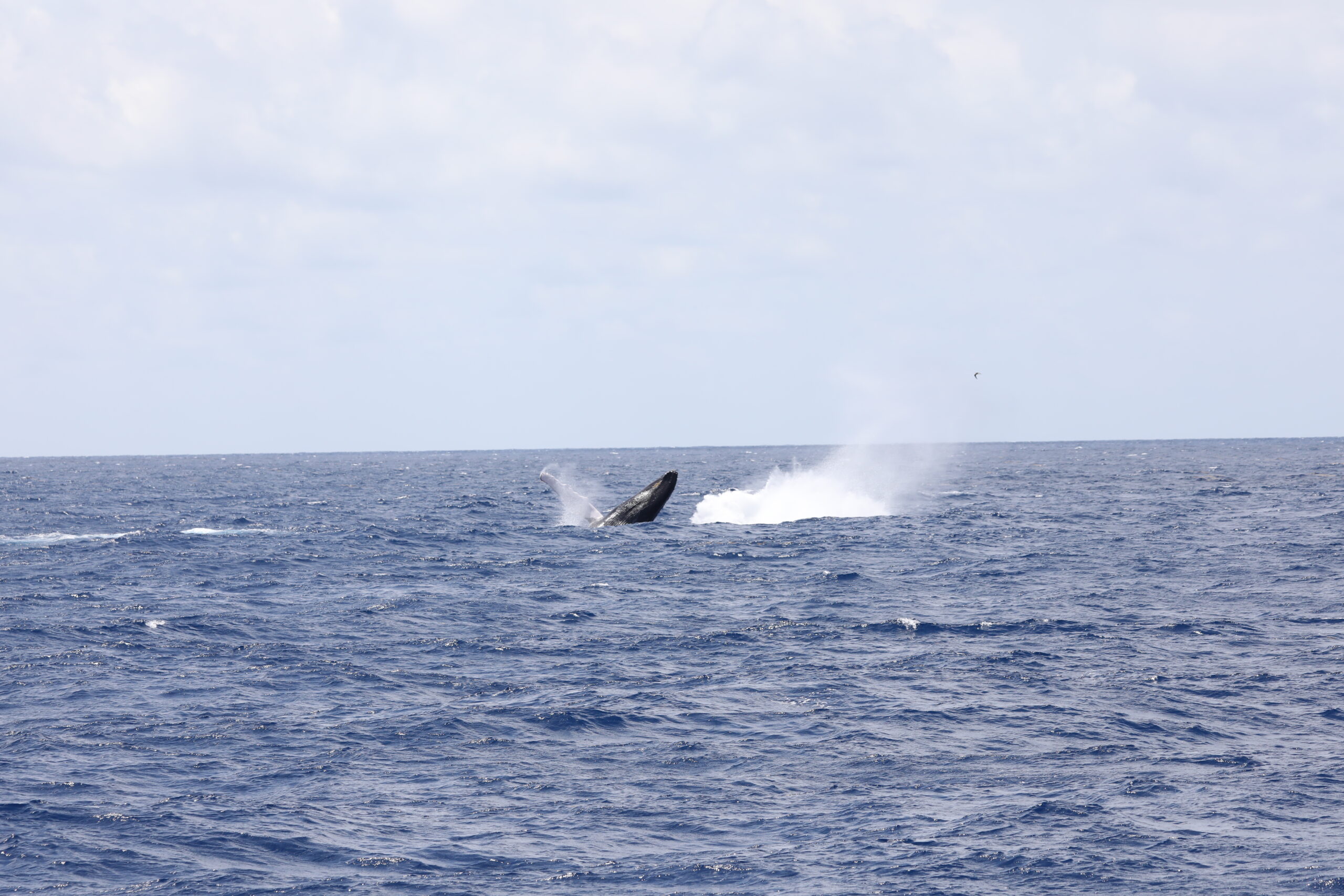
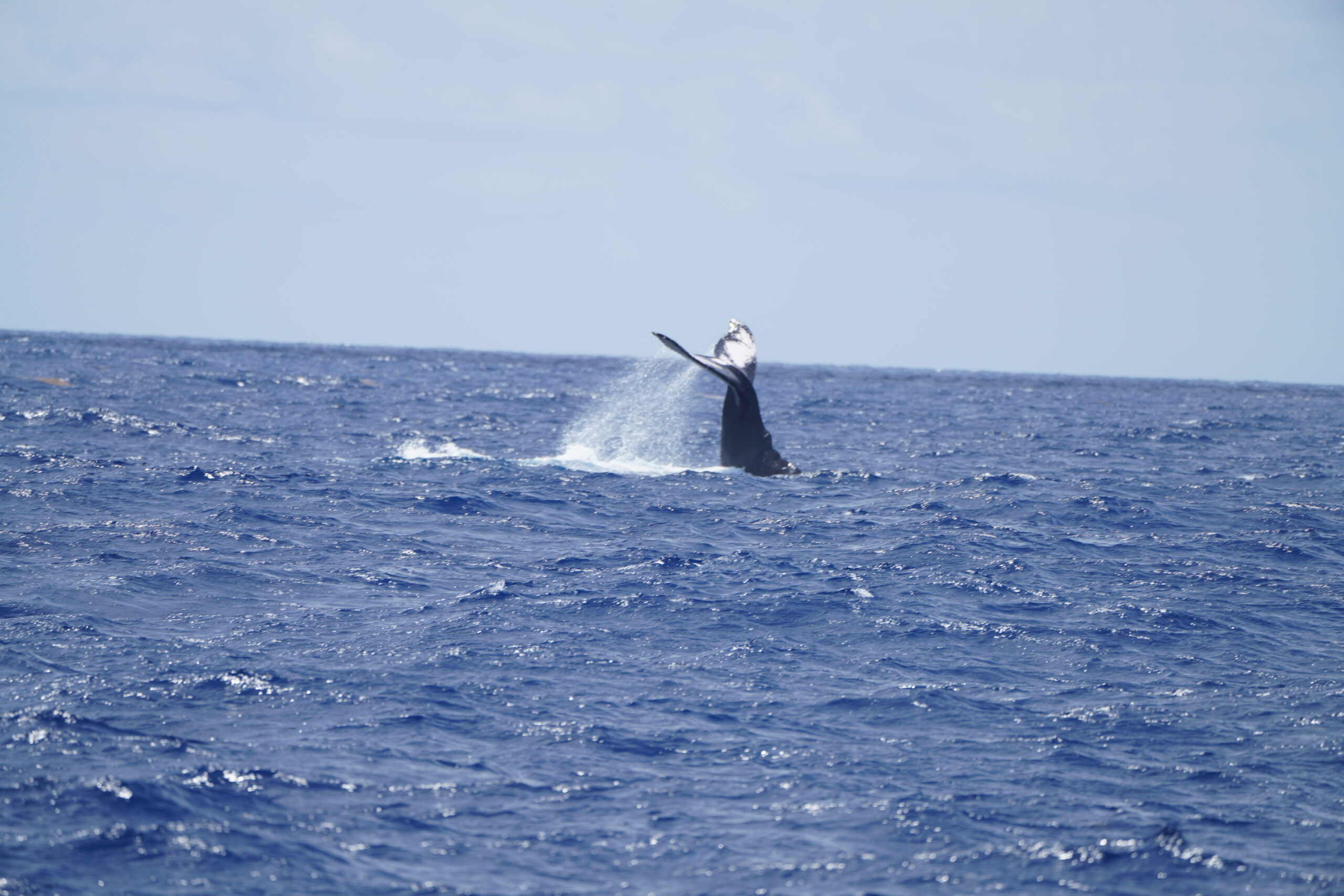
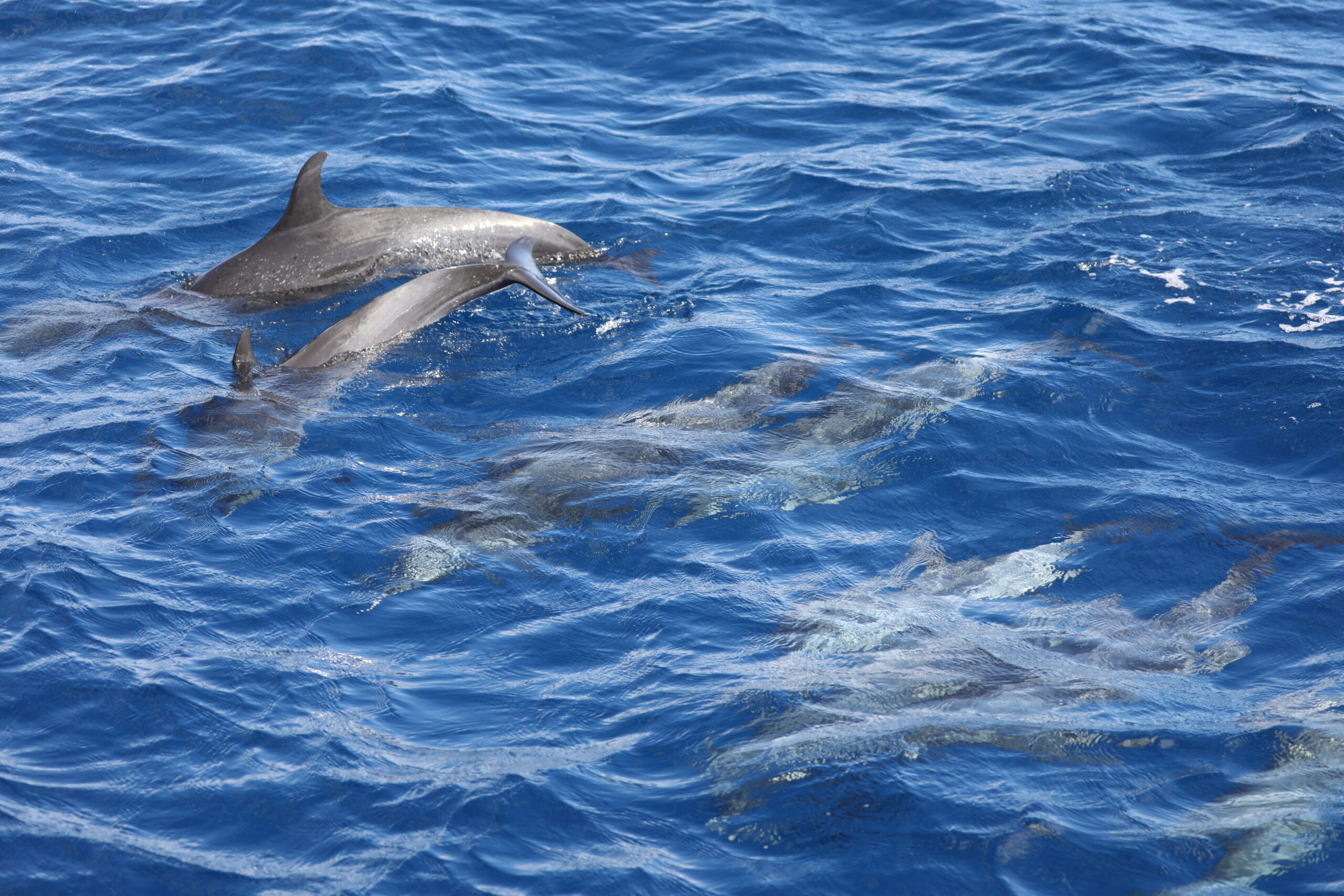
In summary, 8 species of cetaceans were identified, for a little more than 1000 individuals observed. In addition, some unidentified whale species were observed in Guadeloupe, Nevis and Anguilla, and an unidentified dolphin species in Saint Kitts.
Reviews from STENAPA Representatives
STENAPA Ranger – Rupnor Redan
This expedition exposed me to the world of marine mammals research, the use of hydrophones, how it’s deployed and how to use it to detect location and direction the animals are traveling. I know bird calls for bird monitoring in the National Parks and around St Eustatius, but I was intrigued with the different calls of the various whales, dolphins and even shrimp (sort of a crackling sound). Seeing these marine mammals for the first time was quite the thrill.
I’ve also learned the techniques used to find and approach these animals especially the use of transects – used to cover the Saba Bank. Furthermore, how to identify different species from both photos and calls. I appreciated the opportunity to expand my knowledge about Statia’s wild animals, beyond those located on land.
I think we all should be apart of this because all species needs saving, and by being a part of this, Statia and other countries and islands can only help connect an international circle where they (marine mammals) can always be in our sights. I support more funding, and links between islands, so we can increase the cover of research for these migratory species.
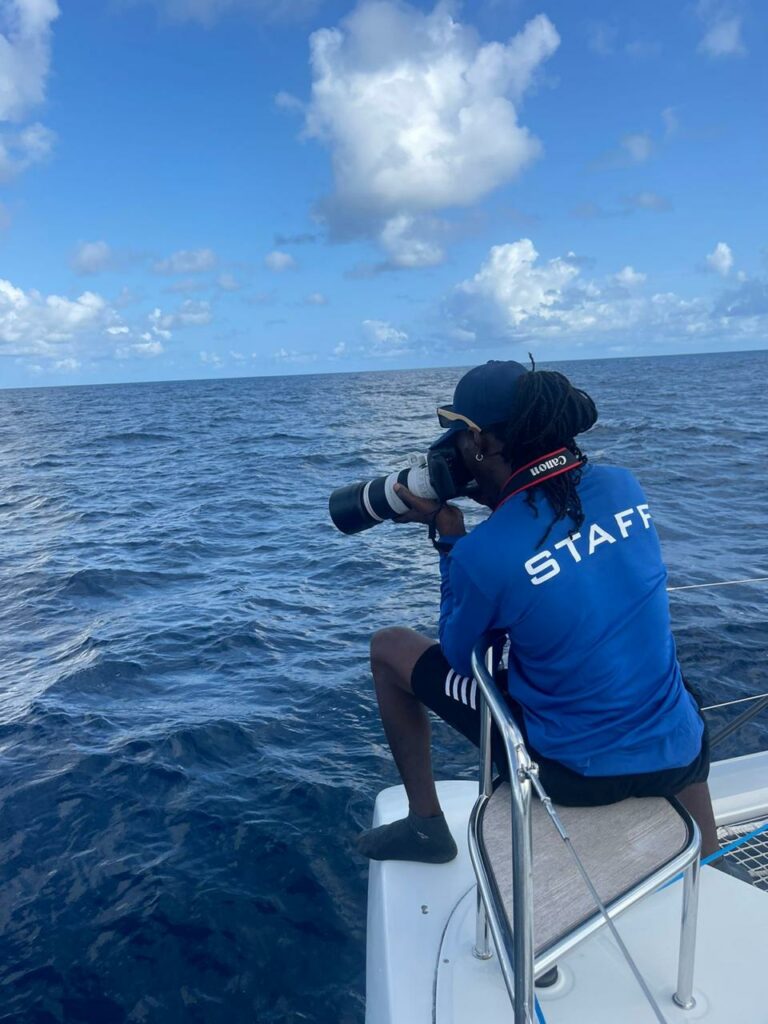
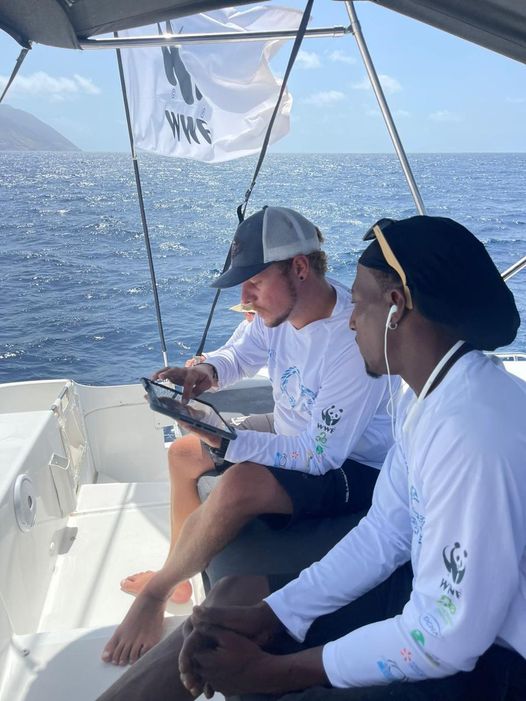
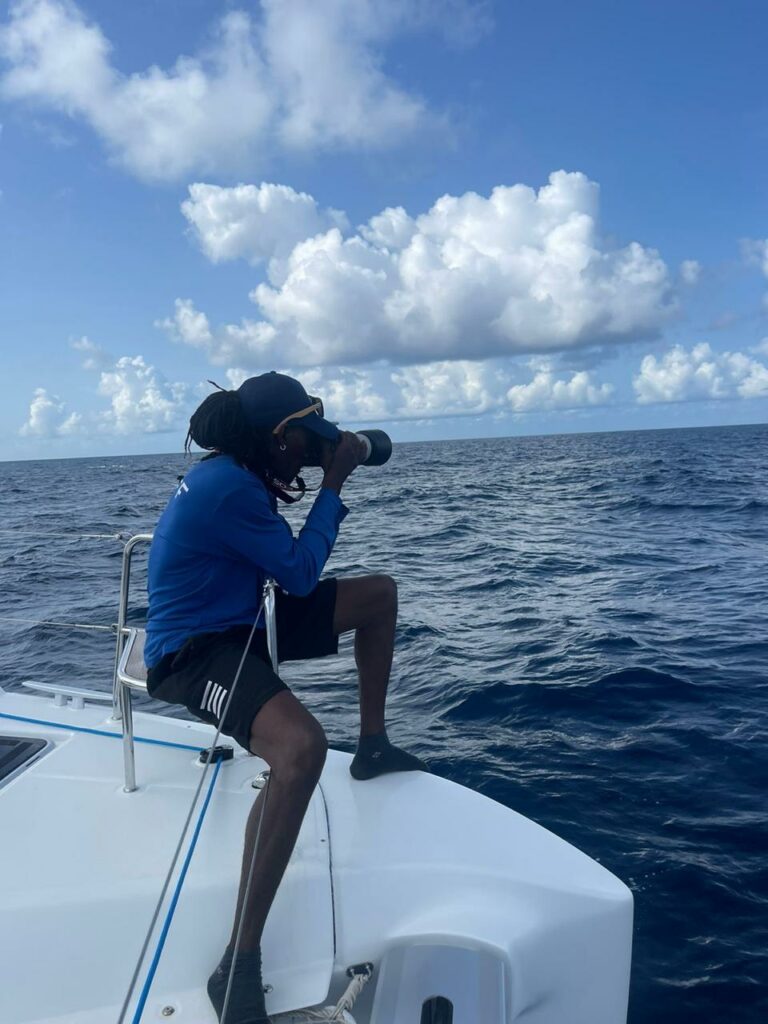
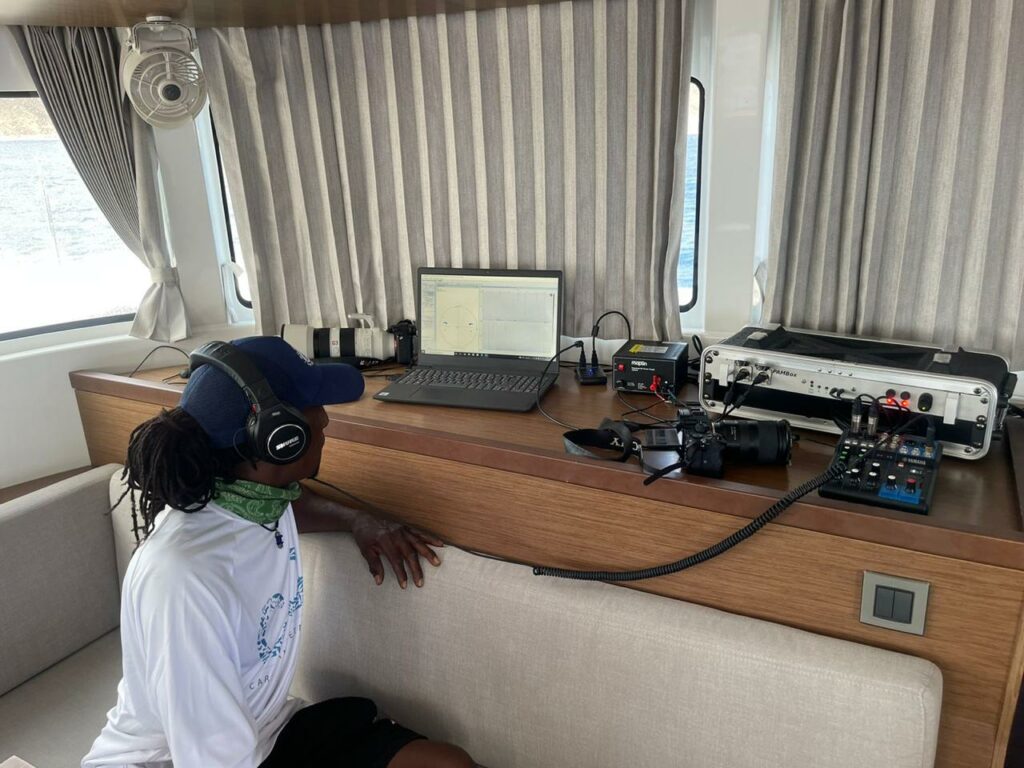
STENAPA Volunteer – Lynn Kuipers
While volunteering, I got the opportunity to join the Caribbean Cetacean Society (CCS) on this Marine Mammal Expedition. I joined the expedition on Saba and continued my journey to Martinique while we ended our days in the waters of Anguilla, St. Martin, Antigua, St. Barth, Montserrat and Guadeloupe. During the day, we would leave the anchor at 6 am and then also directly the monitoring would start. There were 3 different teams, and each had a different task every 2 hours. The tasks included looking for marine mammal activity at sea, collecting data including environmental data, traffic and listening to the hydrophone, and resting. Around 6 pm, we would find a location to moor the boat.
During this expedition, I was very lucky. In total I saw 9 humpback whales and 9 groups of dolphins, belonging to either the bottlenose and the spotted dolphin. Even though we saw quite a few marine mammals, every time someone spotted a new group of dolphins, or whale activity, everyone got very excited to start the data collection. Since you are on the boat with like-minded people and sharing your passion of marine mammals, the entire experience got even better. During this expedition I learned a lot about marine mammal research, using the hydrophone and taking photos of marine mammals for photo identification. If I ever get the opportunity to go on another expedition, I would definitely go again. Thank you CCS for allowing me to come on the expedition, it was a pleasure to join!
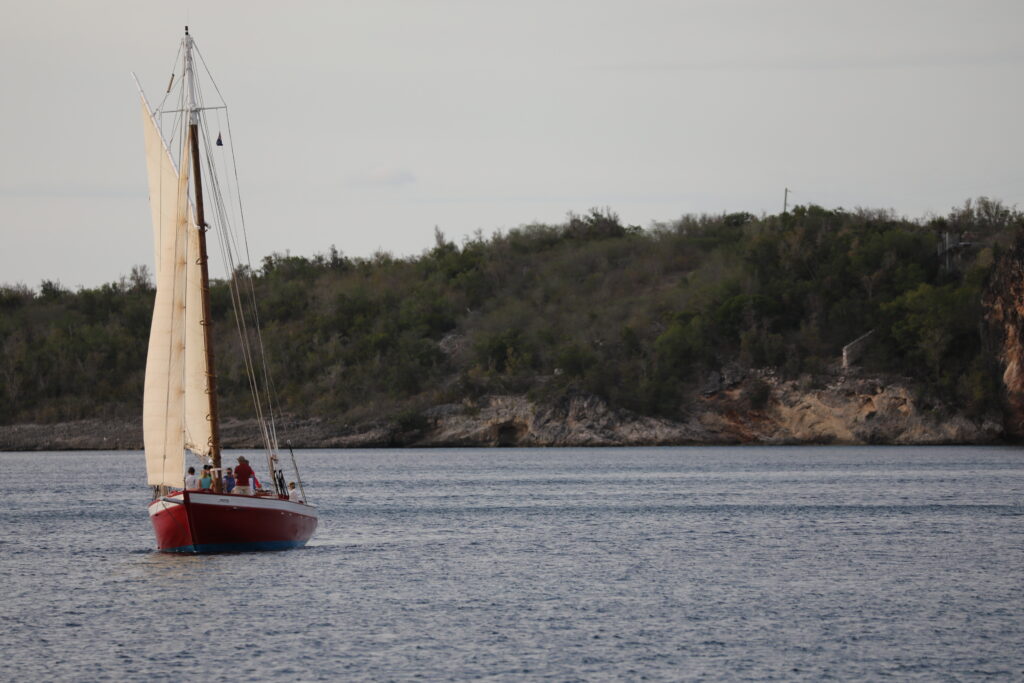
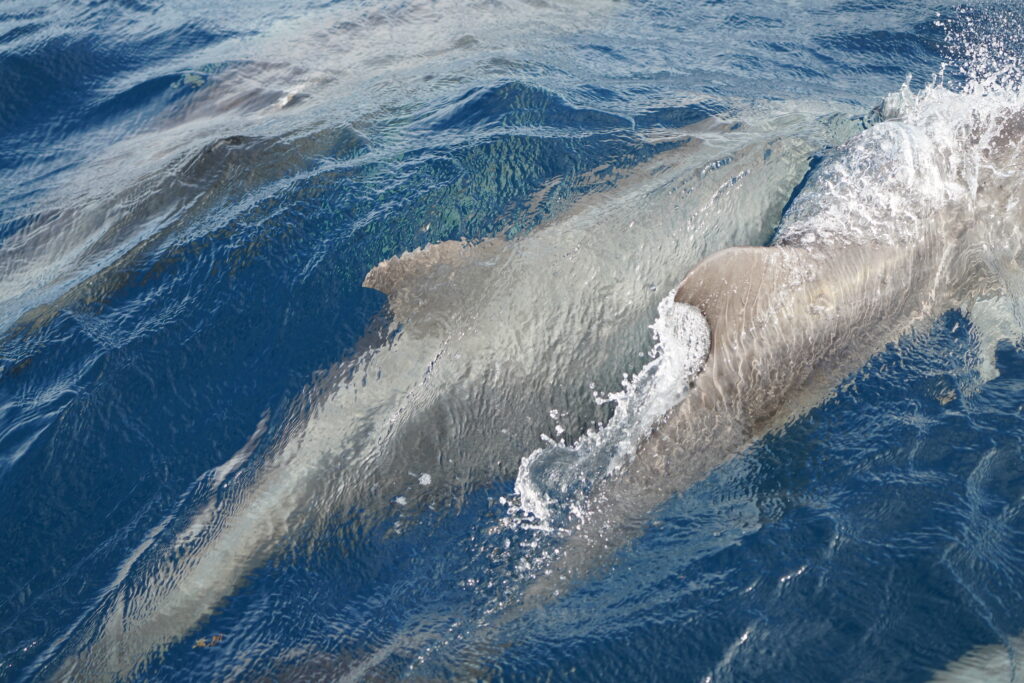
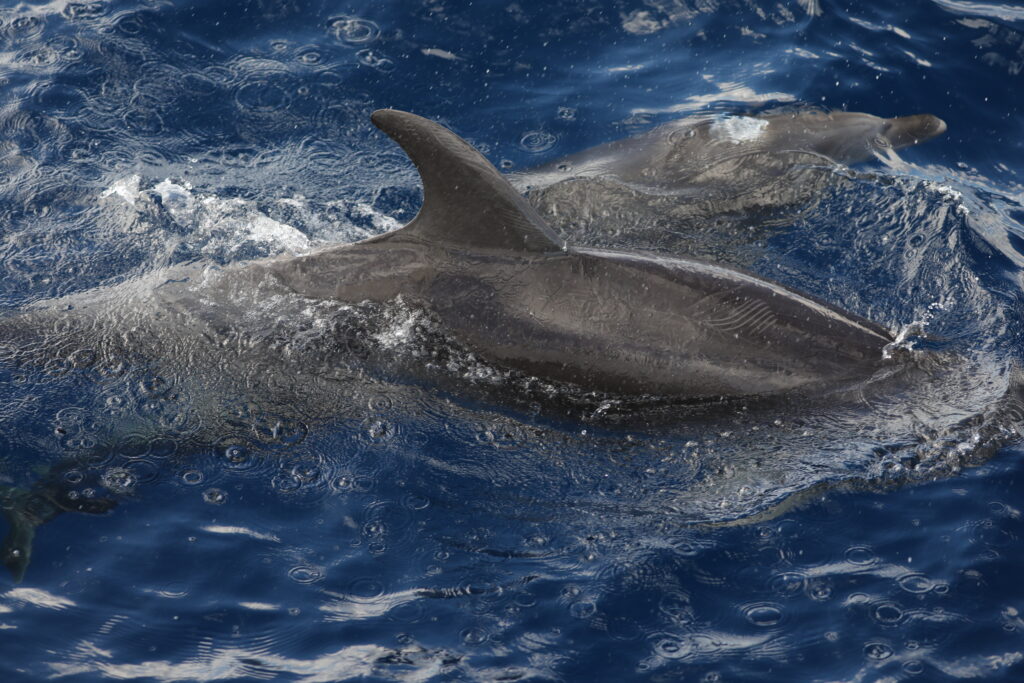
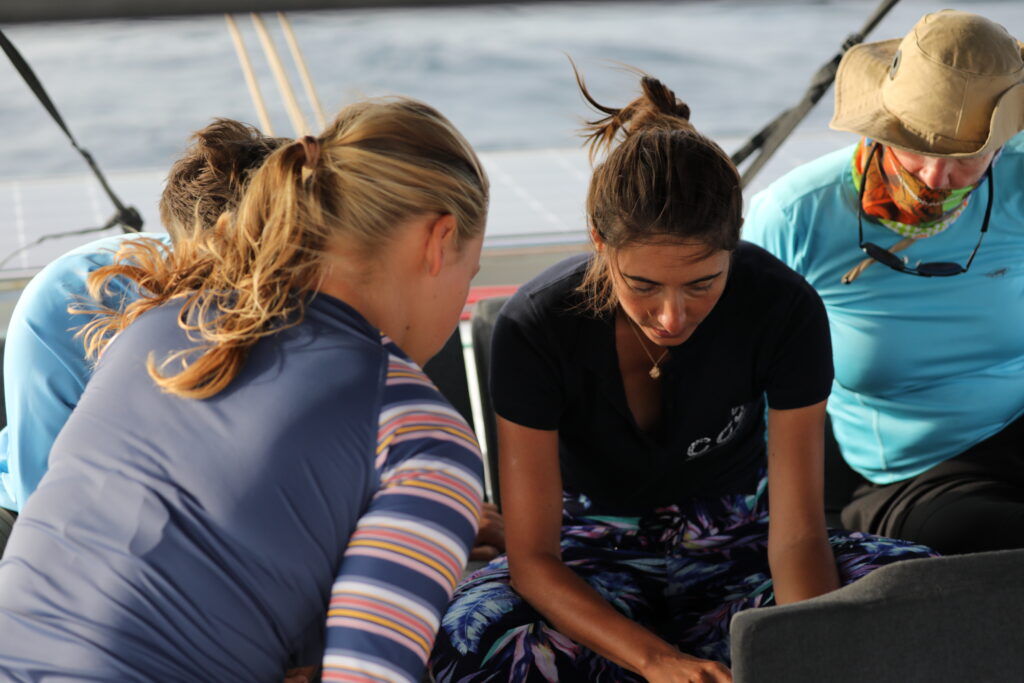
Photo credits: Caribbean Cetacean Society, Visit their project page here.
Report sightings of Marine Mammals and Sea Turtles to STENAPA and Observation.
Here is another marine mammals blog: Nature Awareness Campaign – Whales


